Giovanni Segantini, The morning hoursCirca 1888, Oil on canvas, 72 x 111 cm, Bacon Trust
And if by “other” gaze we mean having tried to offer an original vision through the investigation of an artistic reality that has not yet been revealed, going to the roots of the cultural and figurative assumptions, to make the different souls of the movement explode in the individual rooms , the mission of Fabio Benzi, curator of the route Futurism. The birth of the avant-garde 1910-1915 together with Francesco Leone and Fernando Mazzocca, it can be said to be perfectly accomplished.
121 works that will animate the halls of Palazzo Zabarella until February 26th. These are exceptional masterpieces, some of which are unpublished or rarely exhibited, such as a beautiful Segantini that has not been shown for a very long time or a rare painting by Julius Evola that recalls his beginnings in Balla’s studio, or the works of Jules Schmalzigaug, exhibited in Italy for the first time on this occasion, a painting by Boccioni which is a landscape of Padua from 1904, from the Divisionist era, which links him to the city where the artist born in Reggio Calabria had lived on several occasions.
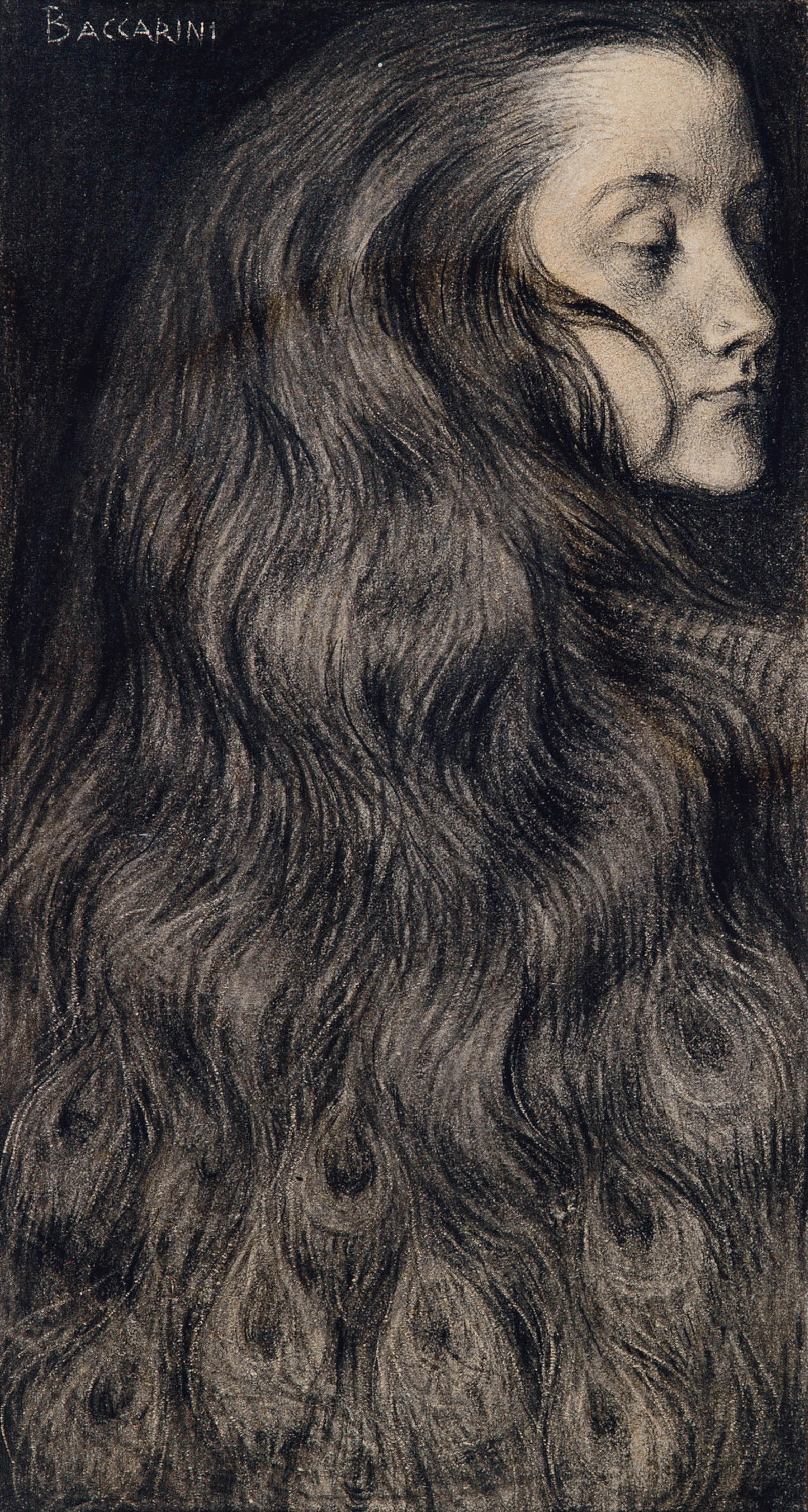
Domenico Baccarini, Pavonessa, 1904, Conté pencil and charcoal on colored paper, 155 x 285 mm, Faenza, Municipal Art Gallery
“The exhibition – explains the curator Fabio Benzi – welcomes works by Boccioni, Balla, Carrà, Romolo Romani – one of the signatories of the first manifesto – by Bonzagni, just to name a few, in short, by all those artists who participated in the Futurist movement. In this innovative sense is also the cut through which painters such as the Belgian Jules Schmalzigaug, a friend of Boccioni’s, and who was at Balla’s studio, who nevertheless had never been included in the group of futurists in the exhibitions held in the past, are presented, despite having participated in the futurist exhibitions of the time. Among the artists on display there is also the Russian Olga Rozanova ”.
On loan from galleries, museums and international collections, for a total of over 45 lenders, all the masterpieces on display saw the light of day during the “heroic” years, from 1910 to 1915. A rather short chronological period that, from the year of foundation of the movement in the pictorial field, extends up to the entry of Italy into the war and the publication of the Manifesto of the Futurist Reconstruction of the Universe which launches futurism into the real “future” of the European avant-gardes, to trace a clear watershed in research of the movement.
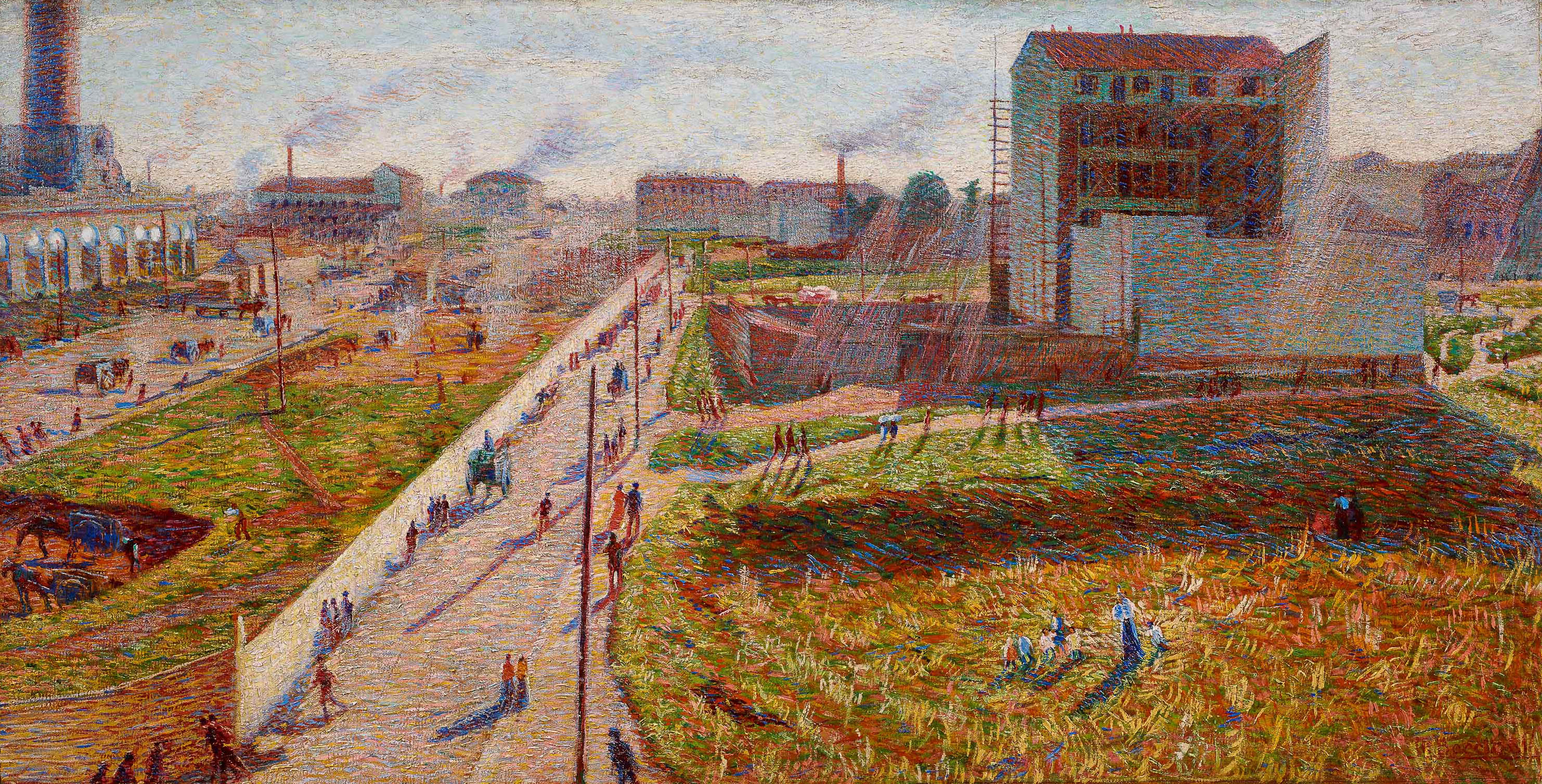
Umberto Boccioni, Noon. Officine a Porta Romana, 1910, Oil on canvas, 145 x 75 cm, Intesa Sanpaolo Collection Gallerie d’Italia – Piazza Scala, Milan
“Those from 1910 to 1915 – continues Benzi – even if they are certainly not to be considered as the most important years for the movement, they are crucial as they are years of formation. On the other hand, in any movement there is always this heroic feeling, aimed at creating, especially at the beginning, a new situation. The novelty of the exhibition consists in having examined, together with the beginnings of the Futurist movement, its first five years. Like all breakthrough movements, Futurism too stems from an avant-garde tradition, such as that of Divisionism which, since the end of the nineteenth century, was considered an avant-garde pictorial language. And then the Symbolism, which was the spiritualist movement in which the reasoning behind the painting constitutes the other great link between Futurism and the art of its time ”.
The Futurists look to Divisionism to the point of declaring, in Manifest of 1910, all their admiration for the painters of this current. They will take possession of their brushstroke, without however hiding their attraction for synthetic forms, for the decomposition of the planes and the destruction of the perspective of Cubism and without forgetting that from Neo-Impressionism they borrow the chromatic brightness and from the Nabis the symbolism of the themes. Starting from these technical assumptions, Futurism breaks with the patterns of the past, also becoming a precursor of ideas and experiences of Dadaism, the Russian avant-gardes and the neo-avant-gardes of the late twentieth century.
He thus becomes the interpreter of a true artistic “revolution” that pursues the ideal of a “total” work of art that goes beyond the narrow confines of painting and sculpture to involve all the senses, making the maximum chromatic contrast of the simultaneity, its salient features of interpenetration.
To articulate these cultural and figurative presuppositions and to welcome the different souls of the movement are the different sections of the exhibition.
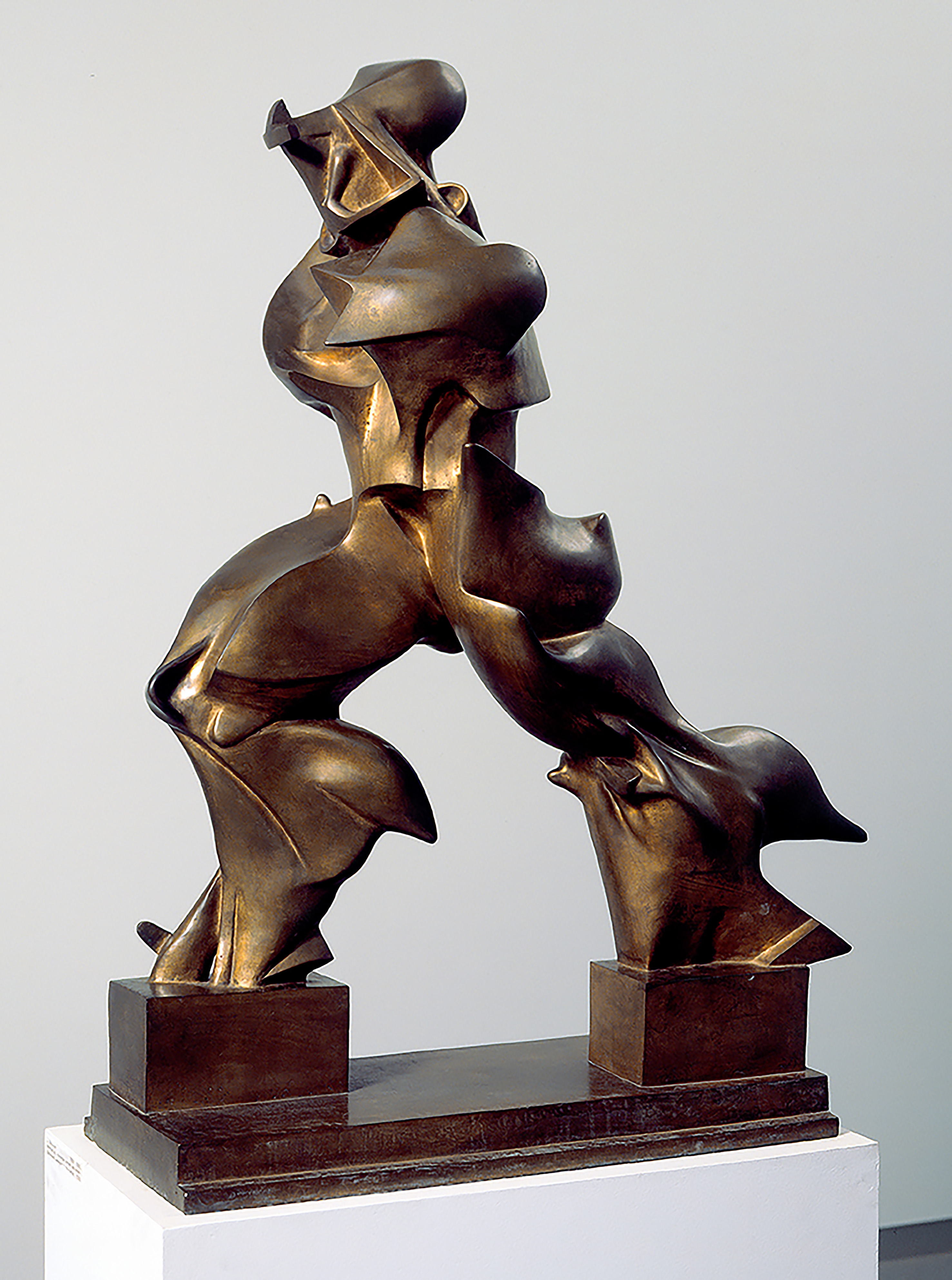
Umberto Boccioni, Unique forms of continuity in space, 1913 (1972) bronze, Kröller-Müller Museum, Otterlo, the Netherlands, acquired with support from the Dr. CH van der Leeuw Foundation
“In these rooms – continues Benzi – the older painters among the futurists and the paintings of the same futurists in the previous moment in which they participate in those ideologies are brought together. Previati, Segantini are the masters of both Divisionism and Symbolism. Galileo Chini, who belonged to a slightly younger generation than, for example, Pellizza da Volpedo, was considered by Boccioni one of the most interesting artists of that era. On display is a painting by Galileo Chini exhibited in the Sala del Sogno at the VII Venice Biennale in 1907. Boccioni in his Diaries he remembers it as the apical moment of modernity in Italy at that moment ”.
And here they are at the beginning of the path, the symbolist roots of Futurism, the tendency to explore the unknown through the representation of psychic phenomena that radiate like waves, auras emanating from bodies, close to the poetics of “states of mind”, Divisionist art thanks to the comparison between the works of Giovanni Segantini, Gaetano Previati, Giuseppe Pellizza da Volpedo and those of the founding fathers of the Umberto Boccioni movement, Giacomo Balla, Gino Severini, Carlo Carrà, Luigi Russolo, Mario Sironi. If the very modern results of Giacomo Balla’s analytical painting of photographic setting, of ruthless objectivity emerge from the sublime Shoulder baghallucinating Self portrait by Russolo, which bursts into the darkness between skulls, resembles a polished interior mirror in which the surreal image of the artist is revealed through the action of the brush.
If “Spiritualism” makes its way with its spearheads, Boccioni’s states of mind of 1911-1912 and Mercury transits in front of the sun di Balla of 1914, the exhibition finds its fulcrum in “Dynamism”, understood as an impetus towards the demands of modernity, but also as a stimulus to found a new vision of the world based on unconventional space-time coordinates.
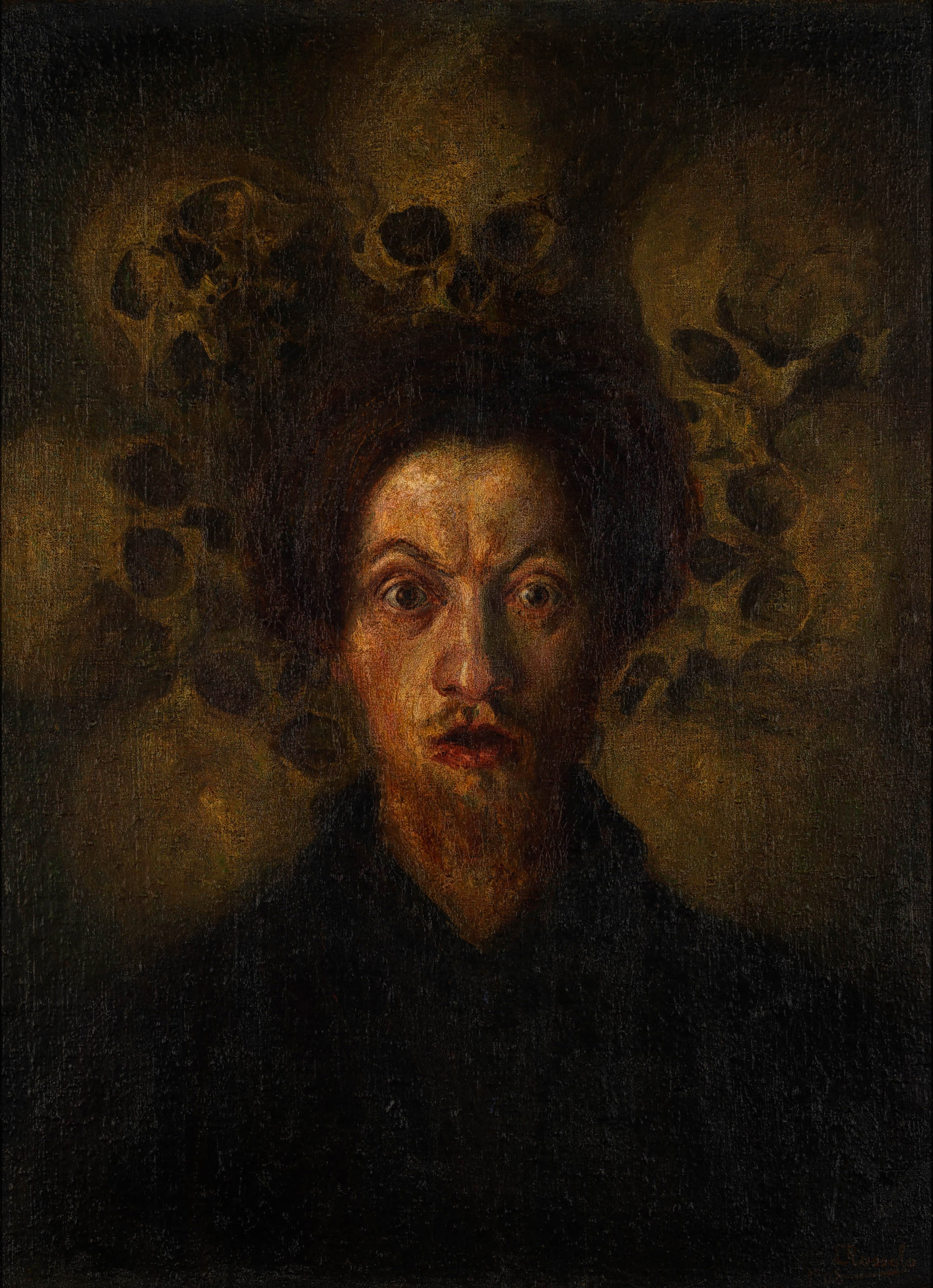
Luigi Russolo, Self-portrait with skulls, 1909, Oil on canvas, 50 x 67 cm, Milan Museo del Novecento
Here works like Vortex + landscape by Giacomo Balla, Horse and rider of Carrà, Still life of pottery, cutlery and fruit by Umberto Boccioni face off with the Small Asolan description by Gino Rossi or with Mechanical and animal dynamism by Gino Galli.
“Modern life” crossed by the “vibrant nocturnal fervor of the arsenals and construction sites set on fire by violent electric moons”, populated by “greedy stations, workshops hanging from the clouds, bridges, steamers, locomotives, airplanes” bursts on Carlo Carrà’s tram where ” people stand still and move, come and go, bounce on the road, devoured by an area of sun, then sit down again, persistent symbols of the universal vibration ”. It still creeps into the New Year’s Eve at La Scala by Aroldo Bonzagni, in the new city imagined – and never built – from the drawings by Sant’Elia, which has the powerful breath of a moving mechanism, or among the Rhythms of ballerina + clowns by Depero.
The idea of the work of art released from its two-dimensional support and projected into the chaotic flow of everyday reality constitutes one of the most fruitful intuitions of Futurism. Self Development of a bottle in space by Boccioni, Balla’s plastic complexes specially recreated for the exhibition at Palazzo Zabarella – since the originals have been lost – and Depero’s Puppets of plastic dances investigate the themes of the “Three-dimensionality” of sculpture and “Polymaterism”, the ” Simultaneity “- a new idea of representation of reality built on the union of components derived from the verification of the physical world and stimuli linked to the inner self – space is created between works such as The dance of the bear by Gino Severini o The bridge of speed by Balla.
But Futurism is also an explosion of words in freedom. The section dedicated to the “Parolibere” sees in Filippo Tommaso Marinetti the architect of a revolutionary process of refounding language, which abolishes all grammatical and syntactic constructions. Futurist writing becomes sign and form, now it represents the sound, now the smell of a sentence, but above all the simultaneity of the visual, sound and synaesthetic sensations of the moods. The theme of “War”, conceived by the Futurists as a means of getting rid of the boring past and letting youth prevail, leads to the last section of the path.
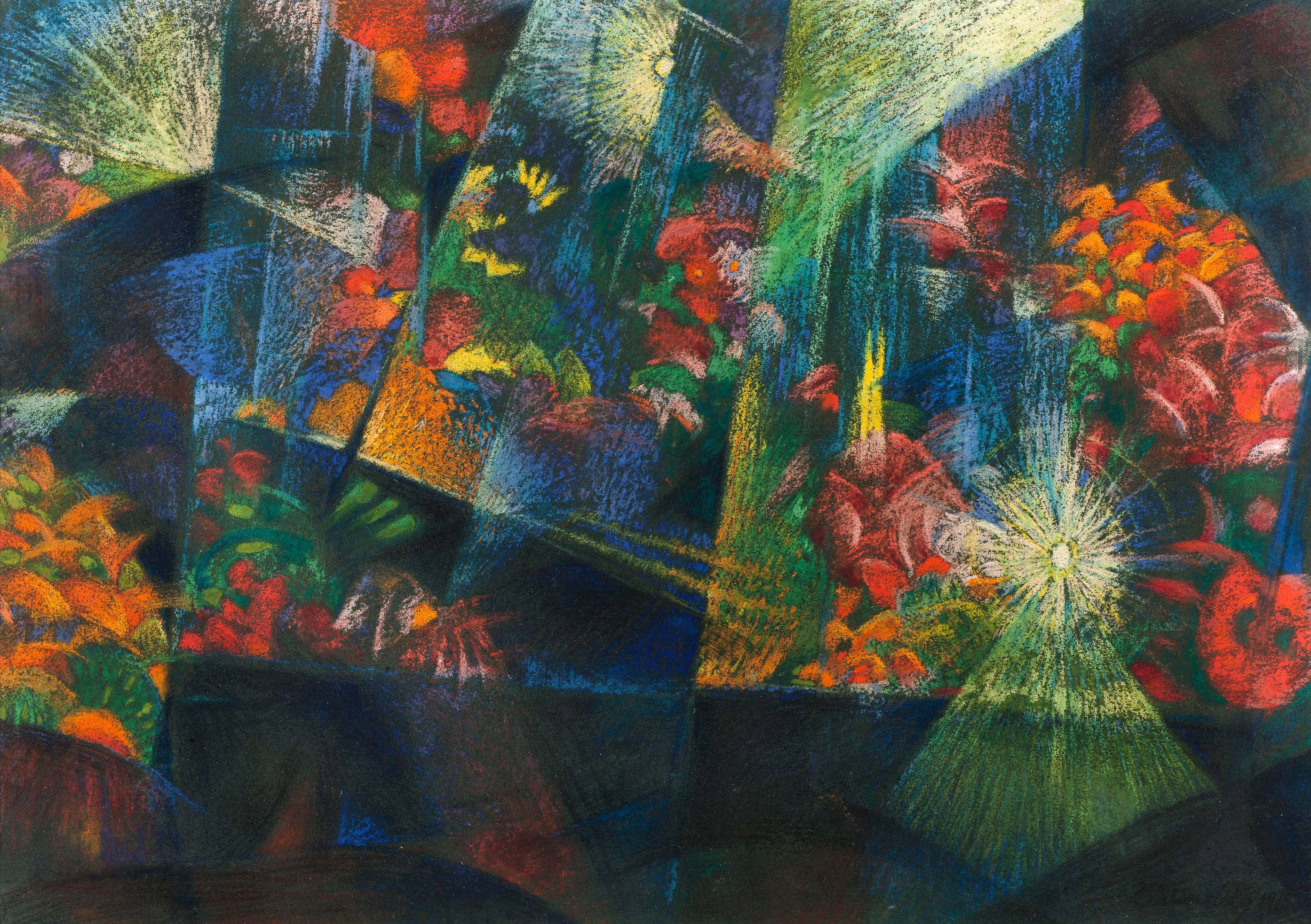
Leonardo Dudreville, Florist showcase, 1915, pastel on paper, 90 x 70 cm
The exhibition “Futurist Reconstruction of the Universe” closes with the concept of “total art” that overwhelms the world of men and things and that finds its first full configuration within the avant-garde movements with the Futurists.
“We – said Balla and Depero, calling themselves at the bottom of the manifesto futurist abstractionists – we want to reconstruct the universe by making it happy, that is, by recreating it in its entirety. We will find abstract equivalents of all the forms and elements of the universe, then we will combine them together, according to the whims of our inspiration ”. These convictions led Balla, after 1915, to carry out experiments in the field of applied arts, furnishing scenography, wall decoration. Will these words perhaps proclaim the beginning of the great fortune of the movement?
“The influence that Futurism will have on the twentieth century – concludes Benzi – is evident in 1915 precisely with the Manifesto of the Futurist Reconstruction of the Universe which is the sortie of aesthetics from the painting to the surrounding universe. All that art of the twentieth century, but also the recent one, which is not expressed through the painting but through performances, modulations of the territory, transformations of reality, design, was born precisely with futurism “.
![]() Read also:
Read also:
• Futurism 1910-1915. The birth of the avant-garde

